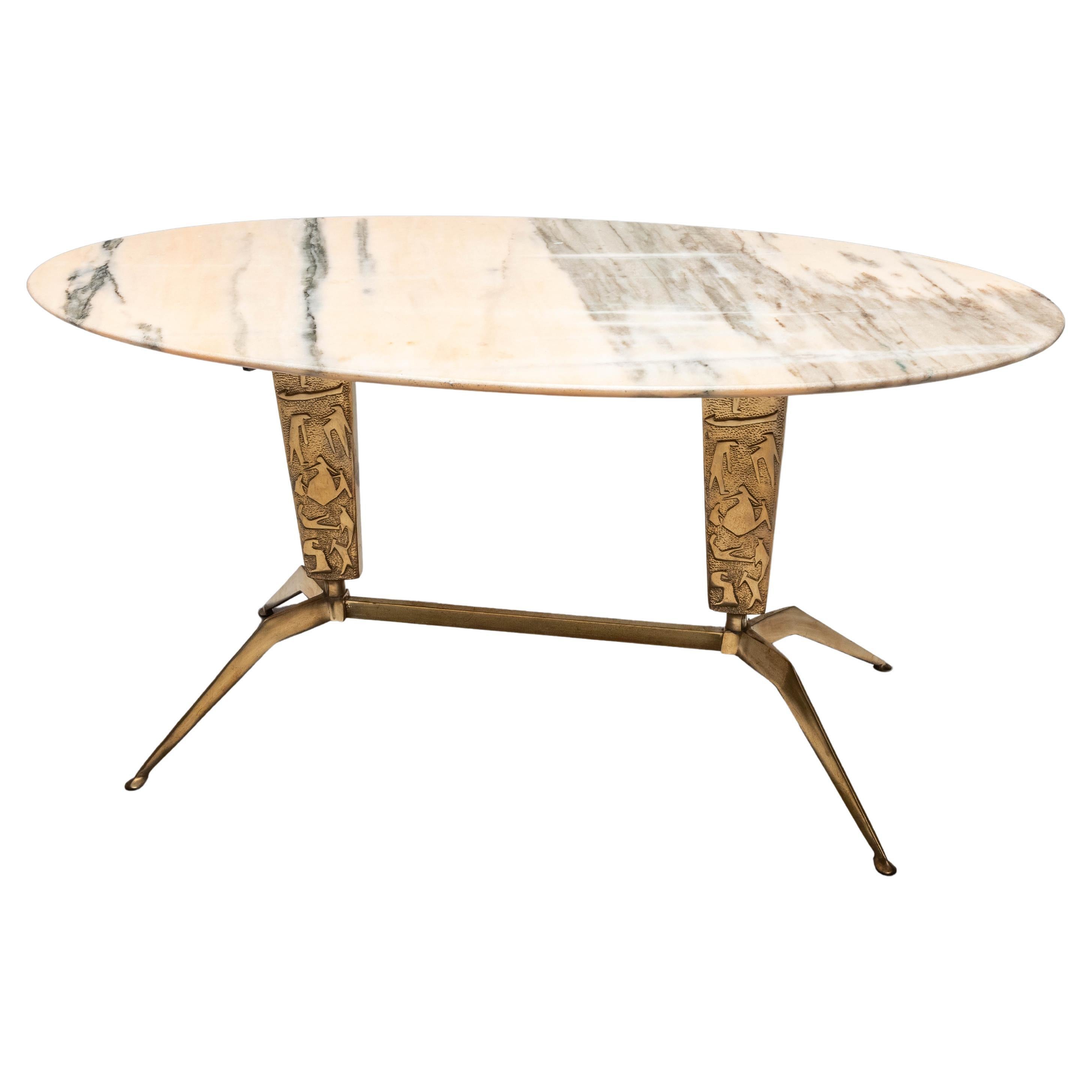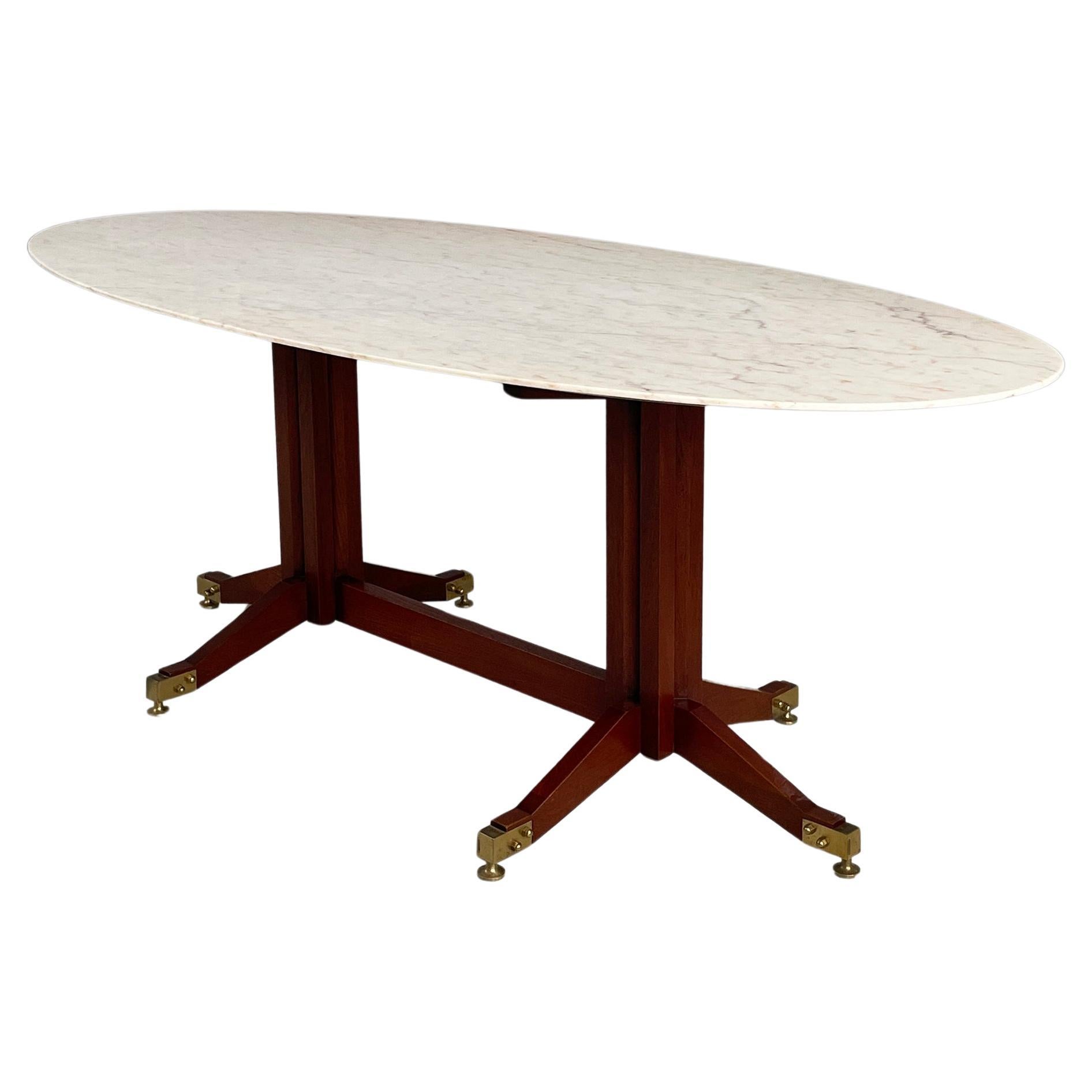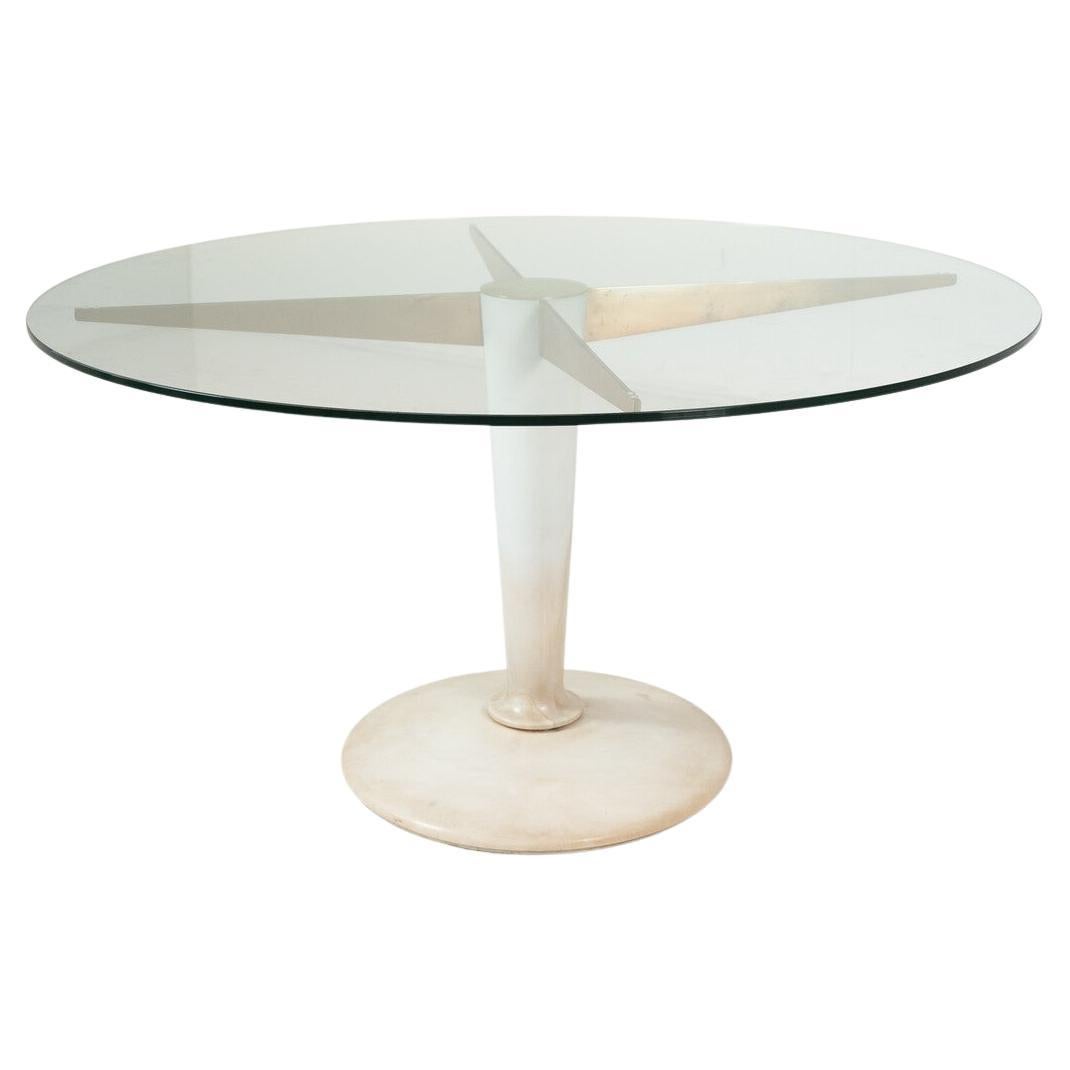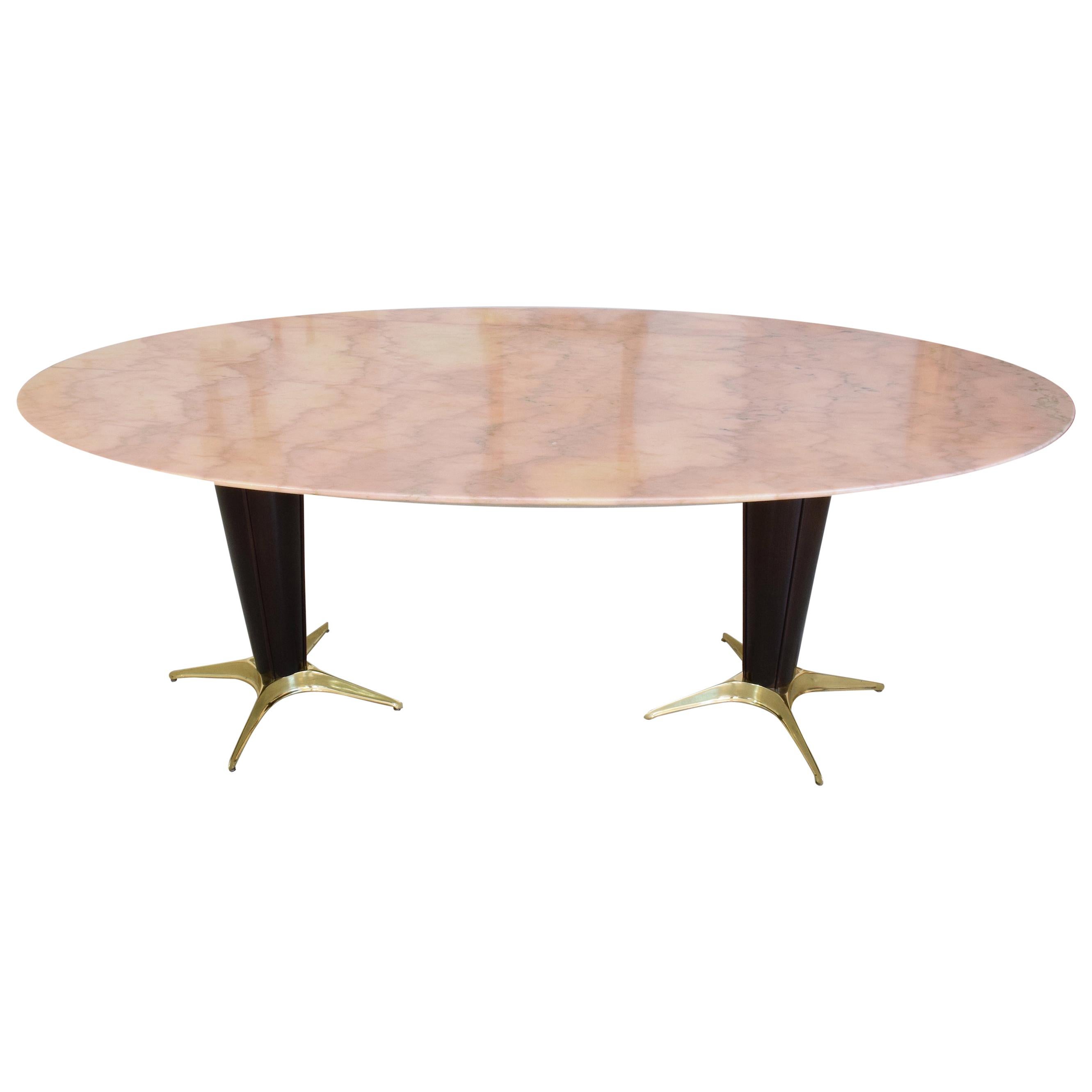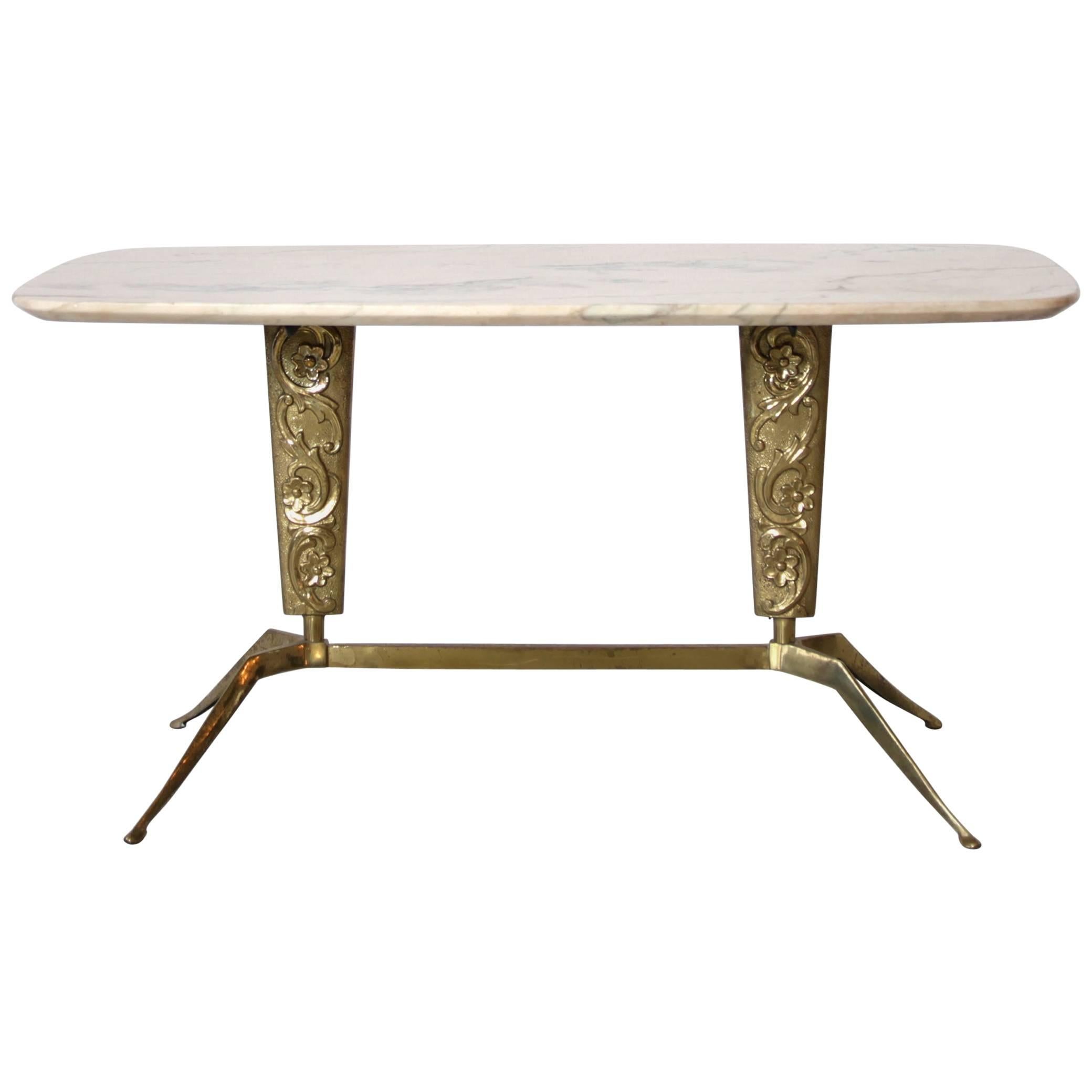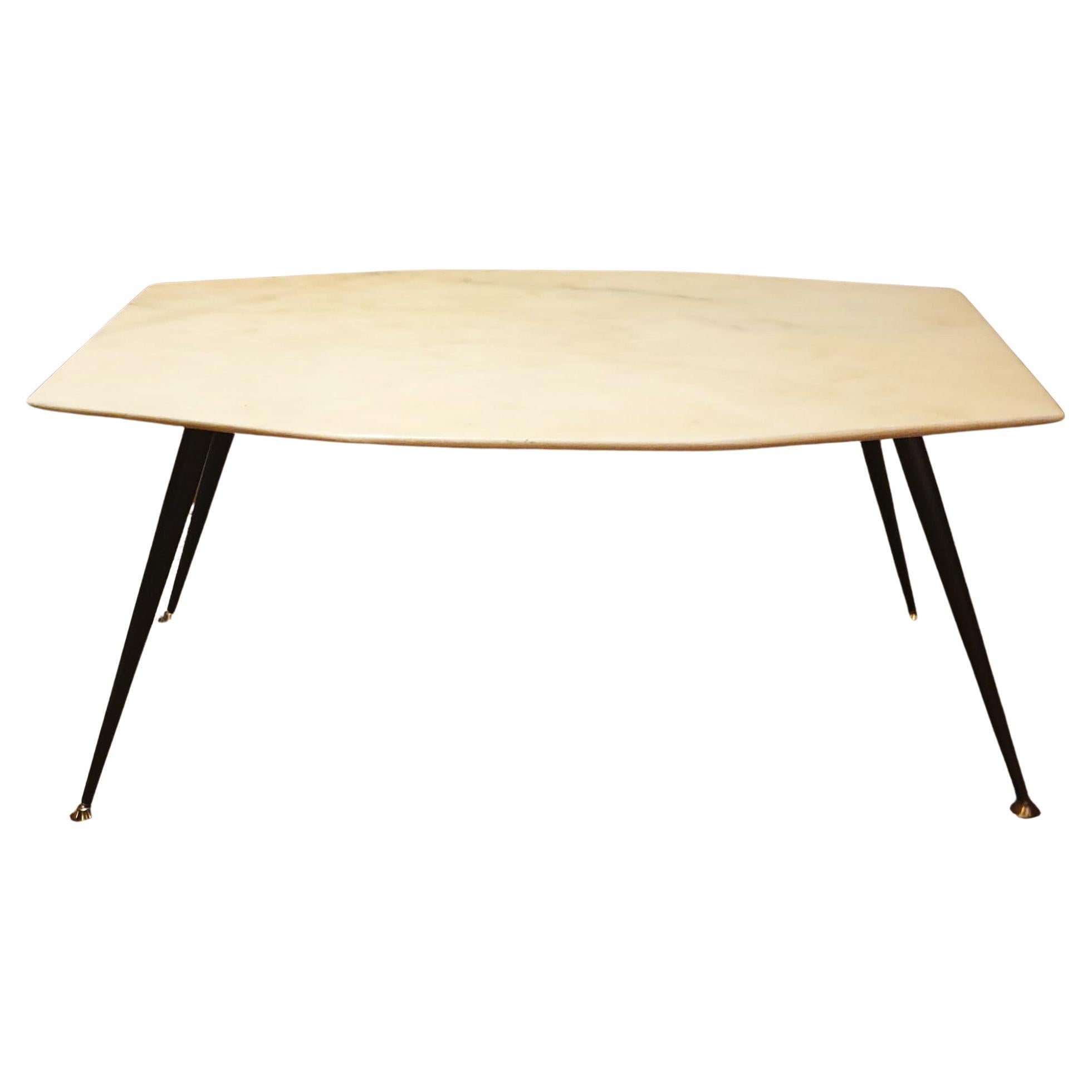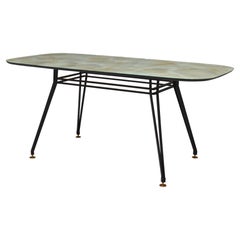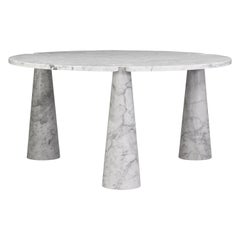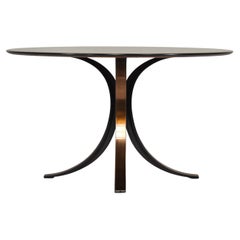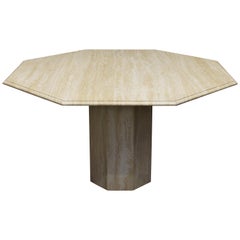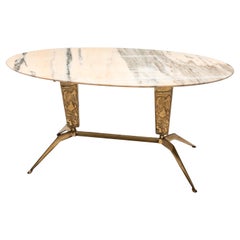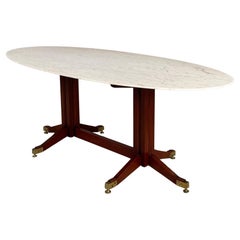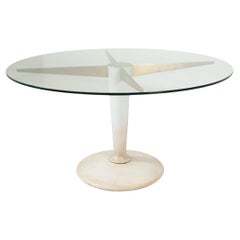Items Similar to 1970's Italian Dining Table in Rosé Marble and Brass - Italy, circa 1970
Want more images or videos?
Request additional images or videos from the seller
1 of 21
1970's Italian Dining Table in Rosé Marble and Brass - Italy, circa 1970
$7,476.42
$9,345.5220% Off
£5,565.71
£6,957.1320% Off
€6,240
€7,80020% Off
CA$10,240.82
CA$12,801.0320% Off
A$11,390.03
A$14,237.5420% Off
CHF 5,947.52
CHF 7,434.4020% Off
MX$138,604.53
MX$173,255.6620% Off
NOK 75,958.89
NOK 94,948.6120% Off
SEK 71,236.04
SEK 89,045.0520% Off
DKK 47,502.94
DKK 59,378.6820% Off
Shipping
Retrieving quote...The 1stDibs Promise:
Authenticity Guarantee,
Money-Back Guarantee,
24-Hour Cancellation
About the Item
Gorgeous Italian dining table with Rosé / Pink marble top with elegant tapered edge. The base is made of a heavy tripod solid brass foot and black lacquered metal. It has adjustable feet which are slightly adjustable in height for leveling.
Designer: Unknown
Manufacturer: Unknown
Country: Italy
Model: Round dining table
Colour: Pink / Gold / Black
Material: Marble / Brass / Metal
Size WxDxH: 120 x 75 centimeter (adjustable feet for leveling)
Period: circa 1970
Condition: Excellent / minor signs of use on the marble top
- Dimensions:Height: 29.53 in (75 cm)Diameter: 47.25 in (120 cm)
- Style:Mid-Century Modern (Of the Period)
- Materials and Techniques:
- Place of Origin:
- Period:
- Date of Manufacture:circa 1970
- Condition:Wear consistent with age and use. Brass has been polished.
- Seller Location:Pijnacker, NL
- Reference Number:1stDibs: LU1712231016772
About the Seller
5.0
Gold Seller
Premium sellers maintaining a 4.3+ rating and 24-hour response times
Established in 2012
1stDibs seller since 2015
257 sales on 1stDibs
Typical response time: 1 hour
- ShippingRetrieving quote...Shipping from: Pijnacker, Netherlands
- Return Policy
Authenticity Guarantee
In the unlikely event there’s an issue with an item’s authenticity, contact us within 1 year for a full refund. DetailsMoney-Back Guarantee
If your item is not as described, is damaged in transit, or does not arrive, contact us within 7 days for a full refund. Details24-Hour Cancellation
You have a 24-hour grace period in which to reconsider your purchase, with no questions asked.Vetted Professional Sellers
Our world-class sellers must adhere to strict standards for service and quality, maintaining the integrity of our listings.Price-Match Guarantee
If you find that a seller listed the same item for a lower price elsewhere, we’ll match it.Trusted Global Delivery
Our best-in-class carrier network provides specialized shipping options worldwide, including custom delivery.More From This Seller
View All1950's Italian Dining Table with Metal Base, Glass Top and Brass Details
By Ignazio Gardella, Ico Parisi
Located in Pijnacker, Zuid-Holland
Italian dining table from the 1950’s.
The table has a black lacquered metal base with in height adjustable brass feet. The table top has a wood edge with a glass top and a stone prin...
Category
Vintage 1950s Italian Mid-Century Modern Dining Room Tables
Materials
Metal, Brass
$2,357 Sale Price
48% Off
Mangiarotti Eros Round Dining Table Carrara Marble Skipper, Italy, circa 1970
By Angelo Mangiarotti, Skipper
Located in Pijnacker, Zuid-Holland
Round Eros dining table by Angelo Mangiarotti for SKIPPER, Italy – circa 1970.
Rare model! With Skipper table!!
The table still remains in very good condition. Very minor signs of use.
Designer: Angelo Mangiarotti
Manufacturer: SKIPPER (labled)
Period: circa 1970
Size: ø145 x 72
Model: Eros dining tabel...
Category
Vintage 1970s Italian Mid-Century Modern Dining Room Tables
Materials
Carrara Marble
$21,566 Sale Price
20% Off
Osvaldo Borsani T69 Round Dining Table by Tecno, Italy, circa 1960
By Osvaldo Borsani, Tecno
Located in Pijnacker, Zuid-Holland
Iconic T69 dining table by Osvaldo Borsani for TECNO, Italy – circa 1960.
Designer: Osvaldo Borsani
Country: Italy
Model: T69 dining table
Design period: circa 1960
Date of manu...
Category
Vintage 1960s Italian Mid-Century Modern Dining Room Tables
Materials
Metal, Brass
$5,751 Sale Price
20% Off
Italian Travertine Marble Round Dining Table, circa 1970
Located in Pijnacker, Zuid-Holland
Elegant Italian travertine marble dining table from the 1970s.
The table is in very good condition with a few small damages to the edge of the table (see images).
Both the tabletop...
Category
Vintage 1970s Italian Mid-Century Modern Dining Room Tables
Materials
Travertine
$3,354 Sale Price
20% Off
Italian 1970s Nesting Tables Gold / Smoked Glass, Italy, circa 1970
Located in Pijnacker, Zuid-Holland
Amazing set of three gold colored Italian 1970s nesting tables. The set resembles a Great Gatsby or Hollywood Regency style.
Designer: Unknown
Manufacturer: Unknown
Country:...
Category
Vintage 1970s Italian Hollywood Regency Nesting Tables and Stacking Tables
Materials
Metal
$1,111 Sale Price
48% Off
Exquisite Round Travertine Dining Table in the manor of Up& Up
By Peter Draenert, Up&Up
Located in Pijnacker, Zuid-Holland
Introducing this exquisite Round Travertine Dining Table – Elegance in the Manor of Up&Up and Angelo Mangiarotti
Manufacturer: in the manor of Up&Up
Model: round dining table
Desig...
Category
Vintage 1970s Italian Mid-Century Modern Dining Room Tables
Materials
Travertine
$7,476 Sale Price
20% Off
You May Also Like
Oval Side Table in Pink Marble and Brass, Italy, 1970's
Located in Uithoorn, NL
Oval Side Table in Pink Marble and Brass, Italy, 1970's
This side table combines a pink-beige marble top with a sculptural brass base. The stone has soft veining in grey and brown t...
Category
Mid-20th Century Italian Mid-Century Modern Side Tables
Materials
Marble, Brass
Italian mid-century modern Dining table in mrble, wood and brass, 1960s
Located in MIlano, IT
Italian mid-century modern Dining table in mrble, wood and brass, 1960s
Dining table with oval top in light marble, in shades of cream white and light pink. The structure on which th...
Category
Vintage 1960s Italian Mid-Century Modern Dining Room Tables
Materials
Marble, Brass
Mid-Century Modern Dining Table, Carrara Marble, Bronze and Glass, Italy, 1950s
Located in Brussels, BE
Mid-Century Modern Dining Table, Carrara Marble, Bronze and Glass, Italy, 1950s - 2 available
Category
Vintage 1950s Italian Mid-Century Modern Dining Room Tables
Materials
Carrara Marble, Bronze
Italian Midcentury Big Oval Marble Dining Table, 1950s
Located in Paris, FR
A 20th century vintage big 8 seater vintage oval dining table composed of a Rosa Portuges pink marble tabletop and a mahogany veneer structur...
Category
20th Century Italian Mid-Century Modern Dining Room Tables
Materials
Marble, Brass
$7,476 Sale Price
20% Off
Italian Mid Century Sofa Table with veined Marble Top, 1950
Located in Wolfurt, AT
This side table was made in Italy in the 1950s. It has a brass frame with a garland motif and four delicate legs. A strong, apricot-coloured marble top rests on the table frame and r...
Category
Vintage 1950s Italian Mid-Century Modern Side Tables
Materials
Marble, Brass
1950s Gorgeous Table in Marble, Brass and Iron, Made in Italy
Located in Milan, IT
1950s Gorgeous table in marble, brass and iron. The table is in excellent condition. Made in Italy.
Category
Mid-20th Century Italian Mid-Century Modern Tables
Materials
Marble, Brass
$1,911 Sale Price
44% Off
More Ways To Browse
Adjustable Height Round Table
Rose Round Table
Marble Tripod Table
Tripod Table Base Marble Brass
French Country Oval Table
Marble Lazy Susan
Paul Evans Cityscape Dining Table
Stickley 20th Century Dining Tables
60 Oval Dining Table
Baroque Refectory Table
Burnt Oak Dining Table
Calacatta Vintage
Danish Shaker Table
Danish Teak Pedestal Table
Eames Round Dining Table
Glove Forms Wooden
Henning Kjaernulf Dining Oak Table
Hexagonal Marble Dining Table
